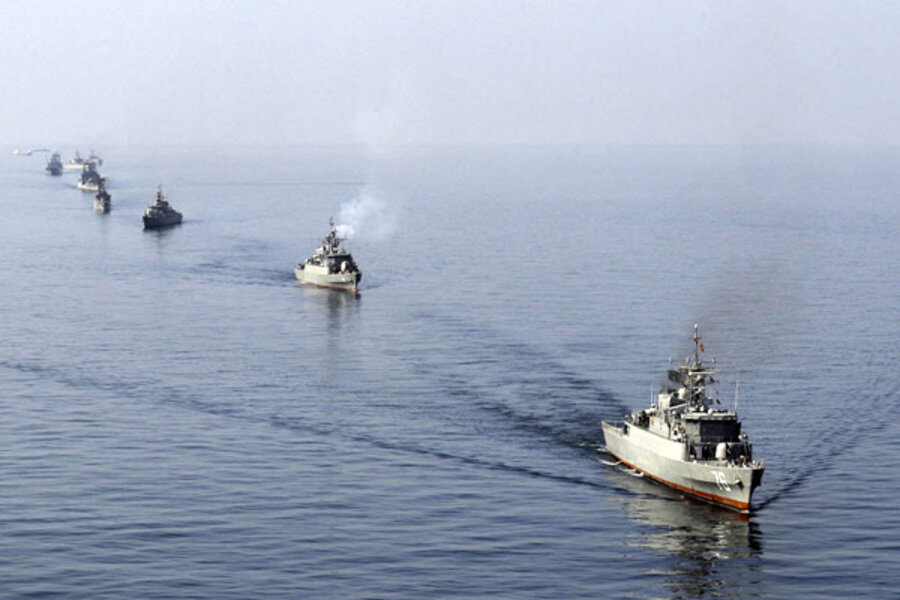After Iran threatens US carrier, bluff will probably be called
The bellicose rhetoric from Iran keeps getting well, more bellicose, as new US sanctions targeting the country's central bank touched off panic in the Islamic Republic's currency market.
The simmering dispute over Iran's nuclear program has threatened to boil over in recent weeks, with Iran directing its threats at the freedom of the seas off its coast, particularly in the Strait of Hormuz, a shipping lane for much of the oil produced in the Persian Gulf.
The latest came from Army boss Ataollah Salehi. He issued a fairly direct threat today to the US Navy, which has readied itself to patrol the Strait of Hormuz since Iranian officials began declaring they have the power to close the strait. "I advise, recommend and warn them over the return of this carrier to the Persian Gulf because we are not in the habit of warning more than once," he said.
Iran said it recently spotted a US aircraft carrier in the Strait. While Iran didn't name the vessel, and the US has not disclosed whether it was there, the USS John C. Stennis of the 5th Fleet was recently in the Gulf, a short steam from Strait of Hormuz.
The freedom of the high seas for both shipping and the US Navy is about as sacrosanct a directive as there is for US admirals, and the chest-thumping from Iran is almost certain to draw a response. The 5th Fleet, based out of Bahrain, exists to keep the oil lanes through the Strait open and oil pumping to the world's economies. Being told they can't go somewhere is an invitation for the naval equivalent of "oh, yeah?"
It's worth remembering that US ships repeatedly crossed Libyan strongman Muammar Qaddafi's so-called "Line of Death" after he declared international waters off the Gulf of Sirte as his own in the 1970s.
While Iran is no match for America's conventional military ability, something Iranian war planners should be well aware of, the increasingly strident threats and counter-responses are increasing the chances of fighting in the area. After Qaddafi's forces reacted hostilely to the US Navy presence in the Gulf of Sirte in 1986, a brief engagement ended with two Libyan ships sunk. In 1987 the USS Stark, on a mission to protect oil tankers during the so-called "Tanker War" between Iraq and Iran, was hit by Iraqi missiles, with 37 crewmen killed. Saddam Hussein's Iraq insisted that the attack was a case of mistaken identity.
In 1988 the USS Vincennes shot down Iran Air Flight 655 over the Strait of Hormuz, killing the nearly 300 passengers on board. The US said it had mistaken the plane for an fighter jet.
All of this should be a reminder that tension and posturing can lead to casualties. And those casualties could lead to broader conflict. Iran is clearly worried about the increasing bite of economic sanctions and is seeking to remind the US and other potential antagonists that the cost of confrontation will not be born by Iran alone. The tough talk today saw benchmark brent crude jump 3 percent to more than $111 a barrel in early trading.
Iran's riyal tumbled as much as 12 percent against the dollar yesterday on speculation that legislation recently signed by President Obama threatening to sanction businesses and governments that do business with Iran's central bank will cut the country off from world commerce. Though AFP reports that the riyal made back most of its loses today, others in Tehran reported long lines at some local banks and merchants seeking to move cash abroad. The currency remains down about 30 percent in the past month.
The economic vulnerability of Iran, combined with the regime's continued insistence that it won't abandon its nuclear program (which it says is for peaceful purposes only), is likely to continue to drive threats like the one made today. While we're a long way from open war, rumors of war and threats of war have a way of leading to the real thing.





